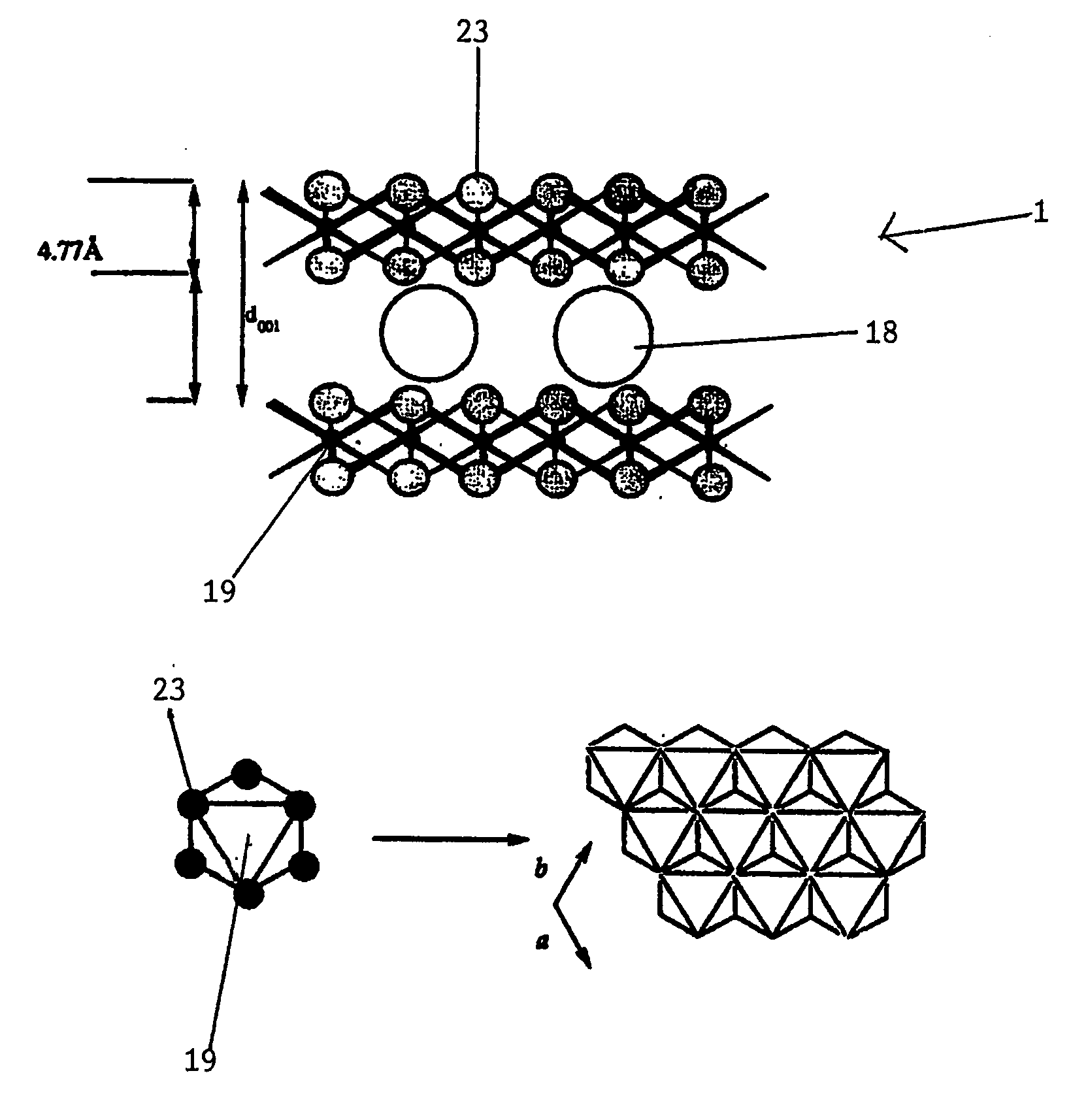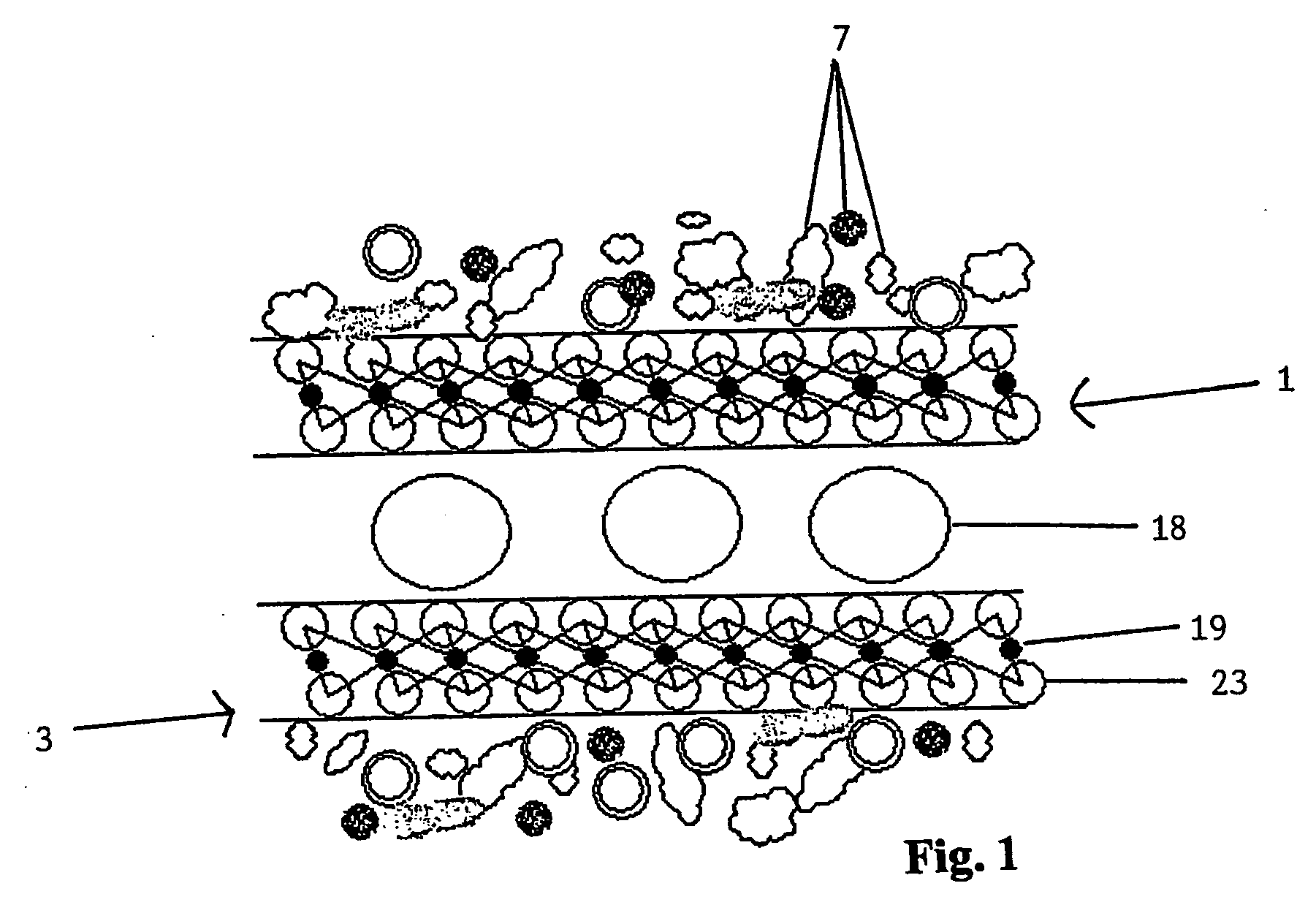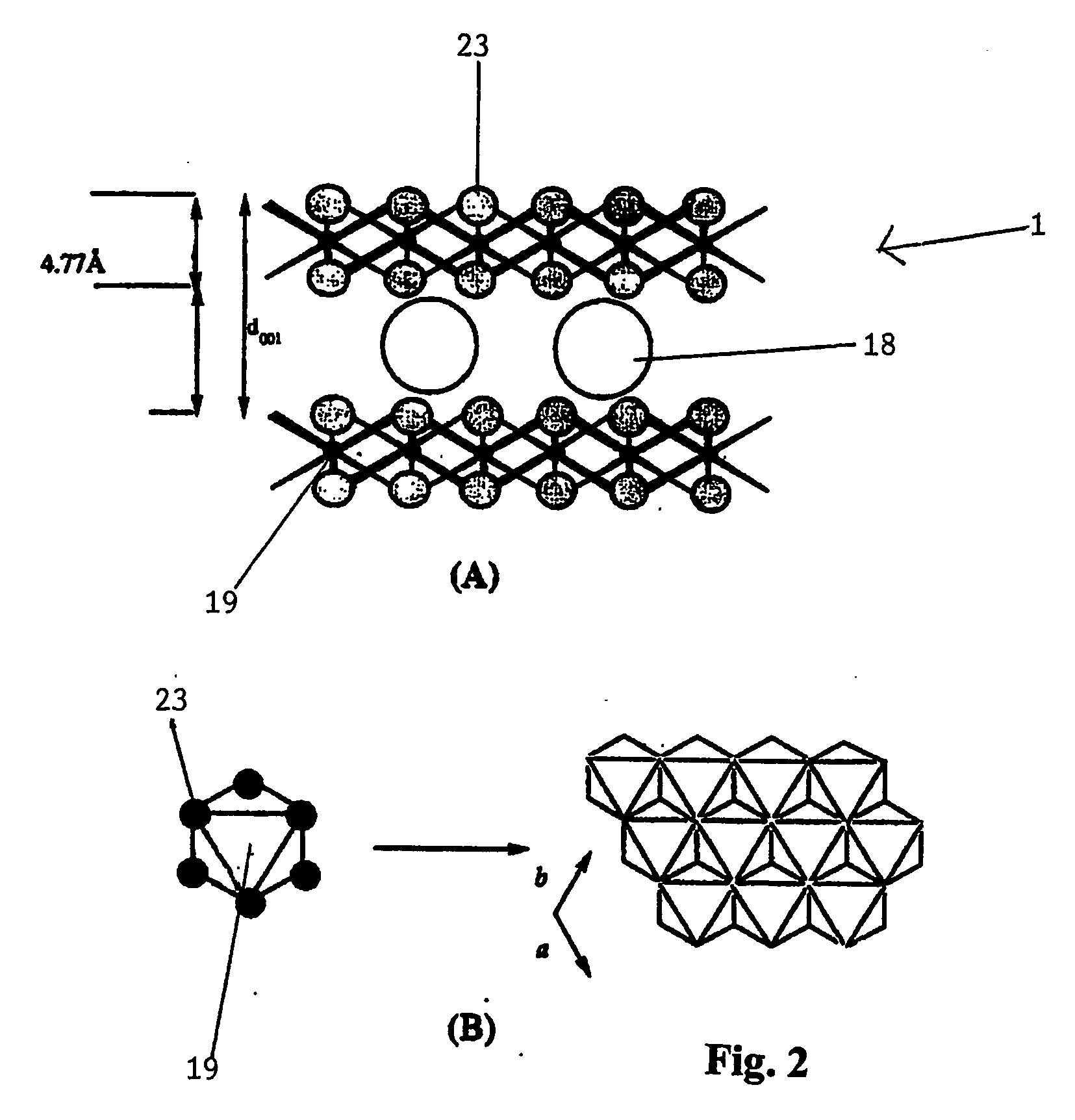Charge-based water filtration systems
a water filtration system and charge technology, applied in the direction of electrodialysis, water/sewage treatment by ion exchange, electrodialysis, etc., can solve the problems of low loading capacity of activated carbon or ion exchange resins, the like, and the inability to meet the needs of frequent changes,
- Summary
- Abstract
- Description
- Claims
- Application Information
AI Technical Summary
Benefits of technology
Problems solved by technology
Method used
Image
Examples
example i
[0127] Virus stocks were diluted in artificial groundwater (CaCl2 0.075 mM, MgCl2 0.082 mM, KCl 0.051 mM and NaHCO3 1.5 mM) having pH 7.5. A 5 ml aliquot of LDH stock solution (ultrasonically dispersed) was transferred to sterilized 25 ml Screw-top Corex glass centrifuge tubes. To avoid generation of an air-water interface (AWI), 25 ml of virus solutions were transferred into such tubes to form a meniscus at the tube opening and capped. Tubes containing the mixture of LDH solution and virus solution were mixed in an end-over-end shaker at 20 rpm for 3 hr at between 4-7° C. and then centrifuged at 9,000 g for 15 min. Virus concentration in LDH suspensions was determined by plaque assay. All experiments were conducted with three replicates and using control blanks.
example ii
[0128] LDH-coated sand was generated by transferring 1000 g oxide-removed sand to a plastic beaker and 2 L 5% LDH solution was added. The mixture was autoclaved for 1 hr and oven dried at 80° C. with occasionally stirring. The LDH-coated sand was then washed extensively with distilled water to remove unbound LDH and oven-dried. Acrylate columns having top and bottom plates sealed with O-rings were fitted with a stainless steel screen on the bottom plate. LDH-coated sand was transferred in 1-cm increments into the column prefilled with deaerated water and stirred to prevent layering and air entrapment. Around 100 pore volumes (PV) of buffer solution (AGW) are pumped into the sealed columns with a peristaltic pump to establish a steady-state flow condition. Virus solutions were pumped into separate corresponding columns and outflow samples were collected in 4 ml glass tubes using a fraction collector. The concentrations of viruses in the various samples were determined by plaque assay...
example iii
[0129] Sand LDH-lignin columns were prepared and equilibrated as described in Example II. Bacteria solutions were pumped into separate columns prepared and outflow samples were collected in 4 ml glass tubes using a fraction collector. The concentrations of bacteria in the various samples were determined by plaque assay.
PUM
| Property | Measurement | Unit |
|---|---|---|
| Fraction | aaaaa | aaaaa |
| Fraction | aaaaa | aaaaa |
| Fraction | aaaaa | aaaaa |
Abstract
Description
Claims
Application Information
 Login to View More
Login to View More - R&D
- Intellectual Property
- Life Sciences
- Materials
- Tech Scout
- Unparalleled Data Quality
- Higher Quality Content
- 60% Fewer Hallucinations
Browse by: Latest US Patents, China's latest patents, Technical Efficacy Thesaurus, Application Domain, Technology Topic, Popular Technical Reports.
© 2025 PatSnap. All rights reserved.Legal|Privacy policy|Modern Slavery Act Transparency Statement|Sitemap|About US| Contact US: help@patsnap.com



